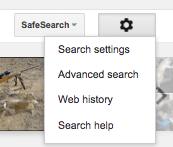Updated August 2019
You can’t afford to hop on every trend you hear about. You have a limited budget for promoting your business, and only so many hours in the day. But for years you’ve been hearing the same tactic suggested continually: business blogging.
Maybe 5 years ago you could shrug and assume it was more buzzword than essential tactic, but it’s harder to write off business blogging now. The trend has not only had real staying power, it’s grown in popularity. And the businesses doing it well get results.
The Case for Business Blogging
To be fair, blogging isn’t something a company should dabble in. If you’re going to start a business blog, you have to do it right. And that means making a real investment in time, money, and effort.
But even acknowledging that there’s a cost, business blogging is absolutely worth it. Here are 7 compelling reasons why.
SEO is the collection of techniques you can use to improve your rankings in the search engines. While Google is tight-lipped about how their algorithms determine which websites deserve top rankings, they’ve been straightforward about some of the ranking factors they value. Two of the top ones: links and content.
Business blogging is good for building both. Maintaining a blog means publishing new content regularly, that:
- Keeps your website fresh, which signals to Google that it’s current
- Gives you lots of opportunities to target keywords your audience is searching for—each new post can focus on a new keyword you could potentially rank for
- Gives other websites more reasons to link back to you. A useful blog post is more likely to earn a link than a home or product page.
HubSpot data showed businesses with blogs earned 97% more links, and had 434% more indexed pages.
Any good SEO expert you talk to will advise starting a blog as one of the first steps in improving your website’s rankings. And once it starts paying off and your webpages creep up on the SERPs (search engine results page) for relevant terms, it gives your website a big boost in visibility.
2. Business blog posts drive traffic.
Your website can’t do its job if people can’t find it. Traffic is one of the most important metrics to determine if your marketing is working and your audience knows how to find you.
Business blogging gives people more pages to consider clicking on. Blog promotion, along with improved SEO, gives people more opportunities to find your website. The natural result of that is higher traffic. That HubSpot data also showed business blogging leads to 55% more visitors.
3. A blog is the cornerstone of a good content marketing strategy.
The best reason to start a business blog is because you’ve committed to doing content marketing. Blogs work best when they’re one part of an overall strategy to provide value to your audience, and gain more attention and followers in the process.
While content marketing can include any number of other tactics—video, podcasts, and email, just to name a few—a blog is the best starting point to get your content marketing efforts off the ground. And it’s a good foundation to build your other efforts from—blog posts can be repurposed into other content formats, and used to promote gated content like ebooks.
4. Business blogging gives you a way to connect with your audience.
This is what content marketing is all about. People are more likely to buy from a brand they feel a connection with. Blogging gives you the opportunity to show helpfulness to your audience and build trust in the process.
People who have read your blog posts will associate you with the topics you cover. That puts you top of mind when they’re thinking about your industry and, by extension, the type of products you offer. That’s good for your brand reputation, and can help you earn customer loyalty.
5. A business blog is a showcase for your expertise.
You know more about what you do and the industry you’re in than most people. A blog allows you to demonstrate that. By sharing what you know, you show people you’re qualified. Customers know they’ll be in better hands buying from someone that knows the industry and understands their problems. Your blog is where you prove to them you do.
That’s not just important for companies that sell services, it matters if you sell products as well. A company that sells accounting software should understand the ins and outs of accounting laws and processes, or how could they create a product that genuinely provides the features its customers need?
6. Business blogging gives your other online marketing a boost.
If you do social media marketing, you need something to put in your social updates. Blog posts give you regular content to share with your followers. If you do email marketing, you need something in your emails to keep subscribers engaged. Blog posts provide regular value and give them more reason to click to your site.
And it works both ways. Someone who likes a blog post on your website is more likely to follow you on social media or sign up for your email list to see more of your content. Business blogging is an important component in a holistic online marketing strategy. Do it well, and it can help make your other tactics stronger.
7. Business blogging keeps you learning.
You’re an expert in your industry. Everyone on your team is. But that doesn’t mean you don’t have more to learn. A business blog requires continually researching what’s going on in your industry. You need to stay on top of trends so you know how to cover and respond to them on your blog.
That not only makes for a better blog, it’s also good for your business. When consistent research becomes a part of the job, it means you become better and smarter at it every day.
Start Your Business Blog
If you’re sold on the benefits of a business blog, then get started. To do it right, here are a few important tips:
Blogging is a lot of work, so you want to get as much out of the time you put in as possible. That means thinking strategically. Do your research to make sure the topics you cover make sense for your audience and your SEO goals. Figure out how to connect your blogging efforts with your other online marketing campaigns. Create a plan and stick with it.
A common early mistake in business blogging is to get too ambitious. If you decide to publish multiple blog posts a day with a small team that’s already overworked, you’ll be on the path to content writing burnout. Make sure your strategy leaves room for the time and work involved in doing this well. Blogging isn’t something to be rushed.
Blogs set an expectation of regularity. If a blog publishes two posts in a week, then nothing for a couple of months, that’s confusing for your audience. Visitors may assume the blog is defunct and not bother checking back or signing up, even if they like your stuff. And you’ll have a harder time seeing any real results.
Figure out a consistent schedule you can keep up with. It’s better to aim for weekly posts and hit that goal every time, then plan for daily posts and fail to keep up.
Creating outstanding blog posts is important to success, but even the best blog post won’t be worth anything if no one reads it. The internet has billions of websites, and your industry likely has hundreds. You’re competing against all of them for the attention of your audience. Publishing a post on your blog isn’t good enough on its own.
Create a plan for promoting your blog posts so people can find them. That could include social media, PPC (pay-per-click) ads, email marketing, or guest posting around the web. Whatever tactics you try, make sure you do something so your hard work pays off.
If it’s not clear yet at this point, business blogging is hard. Worth it, but hard. Part of doing it well is recognizing how much work it requires, so you can set realistic expectations and create a plan your team can manage.
In many cases though, to start really seeing the results you want, you’ll need to go beyond the team you already have. Finding a good freelance blog writer that understands content marketing will take some of the work off your shoulders, help you keep up with the ongoing demands of blog publishing, and increase the odds of meeting your goals.
Any company that hasn’t yet gotten on board with business blogging is falling behind. Every day you wait, the harder it will be to compete against businesses that got there first and built their foundation. That doesn’t mean there’s no point in trying, it means the day to get started is here.
 exception. Even just the term “content marketing,” which has taken over to describe and shape a certain segment of the marketing world, only came into regular use in the past few years.
exception. Even just the term “content marketing,” which has taken over to describe and shape a certain segment of the marketing world, only came into regular use in the past few years.






